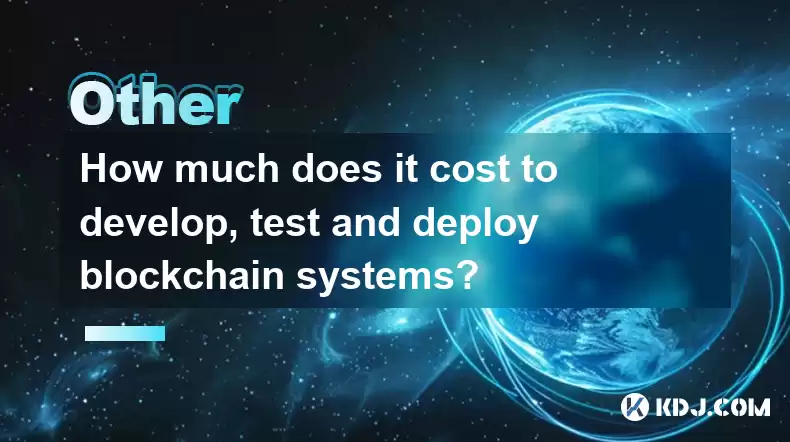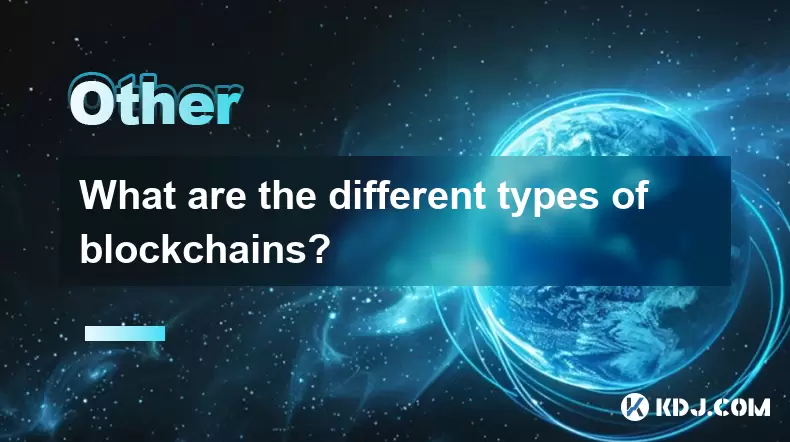-
 Bitcoin
Bitcoin $112400
-1.07% -
 Ethereum
Ethereum $3409
-3.27% -
 XRP
XRP $2.784
-6.60% -
 Tether USDt
Tether USDt $0.9997
-0.03% -
 BNB
BNB $739.3
-2.09% -
 Solana
Solana $158.0
-2.90% -
 USDC
USDC $0.9998
-0.02% -
 TRON
TRON $0.3213
-0.94% -
 Dogecoin
Dogecoin $0.1929
-5.01% -
 Cardano
Cardano $0.6974
-2.82% -
 Hyperliquid
Hyperliquid $36.69
-2.31% -
 Sui
Sui $3.327
-4.80% -
 Stellar
Stellar $0.3672
-5.18% -
 Chainlink
Chainlink $15.65
-3.07% -
 Bitcoin Cash
Bitcoin Cash $525.0
-1.68% -
 Hedera
Hedera $0.2291
-6.00% -
 Avalanche
Avalanche $20.91
-2.96% -
 Ethena USDe
Ethena USDe $1.000
0.00% -
 Toncoin
Toncoin $3.520
-1.12% -
 UNUS SED LEO
UNUS SED LEO $8.968
0.14% -
 Litecoin
Litecoin $105.7
0.26% -
 Shiba Inu
Shiba Inu $0.00001181
-1.79% -
 Polkadot
Polkadot $3.492
-2.08% -
 Uniswap
Uniswap $8.800
-3.10% -
 Dai
Dai $0.9999
-0.01% -
 Monero
Monero $289.9
-3.17% -
 Bitget Token
Bitget Token $4.243
-1.27% -
 Pepe
Pepe $0.00001006
-3.67% -
 Cronos
Cronos $0.1248
-5.68% -
 Aave
Aave $249.7
-2.50%
How much does it cost to develop, test and deploy blockchain systems?
Developing a blockchain system can cost from $20,000 for simple apps to over $300,000 for complex ones, with testing and deployment adding significant expenses.
Apr 15, 2025 at 10:15 pm

Developing, testing, and deploying blockchain systems involves various costs that can significantly vary depending on multiple factors. This article will break down the expenses associated with each phase of the process, providing a comprehensive understanding of the financial implications involved in bringing a blockchain system to life.
Development Costs
The development phase of a blockchain system is often the most costly part of the entire process. The expenses here can be influenced by several key factors.
Team Size and Expertise: The size of the development team and their level of expertise play a crucial role in determining costs. Hiring experienced blockchain developers can be expensive, with hourly rates ranging from $50 to $200 or more, depending on their skills and location. A small team might consist of 3-5 developers, while larger projects may require 10 or more.
Technology Stack: The choice of technology stack can also affect costs. Using established platforms like Ethereum or Hyperledger Fabric can be less costly than developing a custom blockchain from scratch. However, custom solutions may offer more flexibility and control, albeit at a higher price.
Complexity of the Project: The complexity of the blockchain system you are developing will directly impact the cost. Simple applications might take a few months to develop, costing anywhere from $20,000 to $50,000. More complex systems involving smart contracts, decentralized applications (dApps), and integration with existing systems can cost upwards of $100,000 to $300,000 or more.
Testing Costs
Testing is a critical phase that ensures the reliability and security of the blockchain system. The costs associated with testing can be broken down into several components.
Automated Testing Tools: Utilizing automated testing tools can help reduce manual testing efforts and costs. These tools can range from free open-source options to commercial solutions that might cost a few thousand dollars per year.
Manual Testing: Despite the use of automated tools, manual testing is still necessary to catch issues that automated tests might miss. This can involve hiring testers, whose rates can range from $30 to $100 per hour, depending on their experience.
Security Audits: A crucial part of testing is conducting security audits to identify vulnerabilities. Hiring a reputable security firm to perform an audit can cost between $10,000 to $50,000, depending on the scope and complexity of the system.
Testing Environment: Setting up a testing environment that mimics the production environment can also incur costs. This might include the cost of hardware, software licenses, and cloud services, which can range from a few hundred to several thousand dollars.
Deployment Costs
Deploying a blockchain system involves setting up the necessary infrastructure and ensuring its smooth operation. The costs here can vary widely based on the deployment model and scale of the system.
Infrastructure Costs: Setting up the infrastructure for a blockchain system can involve significant expenses. This includes the cost of servers, networking equipment, and cloud services. For a small-scale deployment, this might cost a few thousand dollars, while large-scale deployments can run into tens or even hundreds of thousands of dollars.
Node Management: Managing nodes in a blockchain network can also incur costs. This includes the cost of hardware for running nodes, as well as the electricity and maintenance costs associated with keeping them operational. Depending on the size of the network, these costs can range from a few hundred to several thousand dollars per month.
Integration Costs: Integrating the blockchain system with existing systems and applications can add to the deployment costs. This might involve hiring integration specialists, whose rates can range from $50 to $150 per hour, depending on their expertise.
Maintenance and Support: Once deployed, the blockchain system will require ongoing maintenance and support. This can include regular updates, bug fixes, and monitoring services. The cost of maintenance can range from a few thousand dollars per year for small systems to tens of thousands for larger, more complex systems.
Additional Costs
Beyond the core development, testing, and deployment phases, there are additional costs that need to be considered.
Legal and Compliance: Ensuring compliance with legal and regulatory requirements can be a significant cost. This might involve hiring legal experts to navigate the complex landscape of blockchain regulations, which can cost anywhere from $5,000 to $20,000 or more, depending on the jurisdiction and complexity of the project.
Marketing and Community Building: Marketing the blockchain system and building a community around it can also incur costs. This might involve hiring marketing professionals, running advertising campaigns, and organizing events. These costs can range from a few thousand to tens of thousands of dollars, depending on the scale of the efforts.
Training and Education: Training the team and educating users about the blockchain system can also add to the costs. This might involve developing training materials, conducting workshops, and hiring trainers, which can cost anywhere from a few hundred to several thousand dollars.
Cost Estimation and Budgeting
Estimating the total cost of developing, testing, and deploying a blockchain system can be challenging due to the many variables involved. However, creating a detailed budget can help manage these costs effectively.
Break Down the Costs: Breaking down the costs into development, testing, deployment, and additional expenses can provide a clearer picture of where the money will be spent. This can help in identifying areas where costs can be optimized.
Contingency Planning: Including a contingency fund in the budget is crucial to account for unforeseen expenses. A common practice is to allocate an additional 10-20% of the total budget for contingencies.
Regular Monitoring and Adjustments: Regularly monitoring the project's progress and adjusting the budget as needed can help keep costs under control. This might involve reallocating funds between different phases or cutting back on certain expenses if necessary.
Frequently Asked Questions
What are the main factors that influence the cost of blockchain development?
The main factors include the size and expertise of the development team, the choice of technology stack, and the complexity of the project. Each of these elements can significantly impact the overall cost.How can costs be reduced during the testing phase of a blockchain project?
Costs can be reduced by using automated testing tools, which can help minimize the need for manual testing. Additionally, focusing on critical areas during manual testing and leveraging community resources for security audits can also help manage expenses.What are some common deployment models for blockchain systems, and how do their costs compare?
Common deployment models include public, private, and consortium blockchains. Public blockchains are typically the most cost-effective as they leverage existing infrastructure. Private blockchains, which require dedicated infrastructure, can be more expensive. Consortium blockchains, which are managed by a group of organizations, fall somewhere in between in terms of cost.Are there any hidden costs associated with blockchain development that I should be aware of?
Yes, there can be hidden costs such as legal and compliance fees, marketing and community-building expenses, and training and education costs. These should be factored into the overall budget to avoid unexpected financial burdens.
Disclaimer:info@kdj.com
The information provided is not trading advice. kdj.com does not assume any responsibility for any investments made based on the information provided in this article. Cryptocurrencies are highly volatile and it is highly recommended that you invest with caution after thorough research!
If you believe that the content used on this website infringes your copyright, please contact us immediately (info@kdj.com) and we will delete it promptly.
- BlockDAG, SEI, Ethena: Top Crypto Performers Under the Microscope
- 2025-08-03 10:50:16
- Bitcoin Blasts Past $119K: How Institutional Adoption and Macro Shifts Fuel the Fire
- 2025-08-03 10:55:16
- Crypto, Grok, and August: Decoding the Latest Trends and Insights
- 2025-08-03 11:10:16
- Crypto, Phishing, and Your Wallet: A New Yorker's Guide to Staying Safe
- 2025-08-03 10:30:16
- Troller Cat Meme Coin Presale Soars: A New King in the Crypto Jungle?
- 2025-08-03 10:30:16
- Grayscale, Altcoin Trust, and Mid-Cap Mania: What's the Deal?
- 2025-08-03 08:50:16
Related knowledge

What is the difference between on-chain and off-chain transactions?
Aug 02,2025 at 04:22pm
Understanding On-Chain TransactionsOn-chain transactions refer to digital asset transfers that are recorded directly on a blockchain ledger. These tra...

What is the double-spending problem and how does blockchain prevent it?
Aug 02,2025 at 01:07pm
Understanding the Double-Spending ProblemThe double-spending problem is a fundamental challenge in digital currency systems where the same digital tok...

What is the difference between a blockchain and a database?
Aug 01,2025 at 09:36pm
Understanding the Core Structure of a BlockchainA blockchain is a decentralized digital ledger that records data in a series of immutable blocks linke...

How does blockchain handle scalability?
Aug 02,2025 at 02:58pm
Understanding Blockchain Scalability ChallengesBlockchain scalability refers to a network's ability to handle an increasing volume of transactions wit...

What are the different types of blockchains?
Aug 03,2025 at 03:01am
Public Blockchains: Open and Decentralized NetworksPublic blockchains are the most widely recognized type of blockchain, characterized by their open a...

What is a hash in a blockchain?
Aug 02,2025 at 05:28am
Understanding the Concept of Hash in BlockchainA hash in the context of blockchain technology refers to a unique digital fingerprint generated by a cr...

What is the difference between on-chain and off-chain transactions?
Aug 02,2025 at 04:22pm
Understanding On-Chain TransactionsOn-chain transactions refer to digital asset transfers that are recorded directly on a blockchain ledger. These tra...

What is the double-spending problem and how does blockchain prevent it?
Aug 02,2025 at 01:07pm
Understanding the Double-Spending ProblemThe double-spending problem is a fundamental challenge in digital currency systems where the same digital tok...

What is the difference between a blockchain and a database?
Aug 01,2025 at 09:36pm
Understanding the Core Structure of a BlockchainA blockchain is a decentralized digital ledger that records data in a series of immutable blocks linke...

How does blockchain handle scalability?
Aug 02,2025 at 02:58pm
Understanding Blockchain Scalability ChallengesBlockchain scalability refers to a network's ability to handle an increasing volume of transactions wit...

What are the different types of blockchains?
Aug 03,2025 at 03:01am
Public Blockchains: Open and Decentralized NetworksPublic blockchains are the most widely recognized type of blockchain, characterized by their open a...

What is a hash in a blockchain?
Aug 02,2025 at 05:28am
Understanding the Concept of Hash in BlockchainA hash in the context of blockchain technology refers to a unique digital fingerprint generated by a cr...
See all articles

























































































